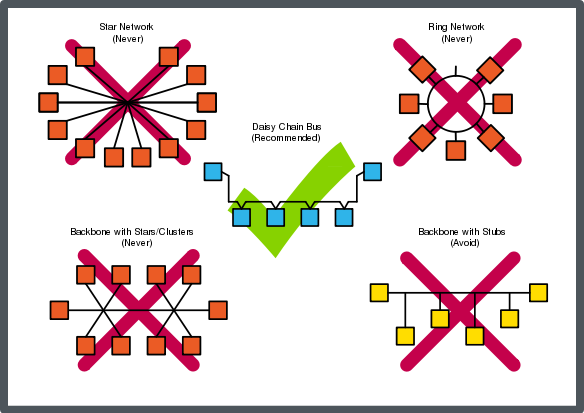
Concept
Cable Routing
The RS-485 network cable should be routed in a continuous daisy chain bus configuration. There should not be any stub connections, stars or ring configurations. The bussed cable should pass through each node to be connected with no splits or branches in the cable network.
The network configuration diagrams below (with red Xs) show undesirable arrangements of the connected copper cabling. Repeaters can be used to achieve the star, distributed star (backbone with clusters), and stubs off of the backbone. The repeater separates the cable and each side (or each port on a multi-port repeater) starts a new wire segment. This avoids the effect of stub or cluster/lump capacitance from distorting the data on the backbone. No more than two repeaters should separate any two nodes on the network. This means after you use a repeater to drop a branch leg off the backbone at multiple locations, you cannot add another repeater on any branch. The additional repeater would create a three repeater string to one or more nodes on the network.

Bus routing configurations to avoid
 RS-485 Communications
RS-485 Communications
 Generic RS-485 Network Devices
Generic RS-485 Network Devices
 b3 BACnet Devices
b3 BACnet Devices
 MNB BACnet Devices
MNB BACnet Devices
 Legrand Power Meters
Legrand Power Meters
 Viconics VT/VZ/SE 7xxx Series Devices
Viconics VT/VZ/SE 7xxx Series Devices